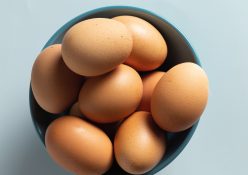Let us help our planet, and ourselves, by adopting healthy plant-based eating habits
Dietary and Lifestyle
Changes should be made incrementally – it’s a steady process of ensuring that we are doing what’s best for our bodies and
our environment. Diet-related non-communicable diseases such as diabetes, cancer and heart disease are among the leading causes of global deaths, and with the world experiencing an increase in obesity (but on the flip side an increase in long-term hunger), a change in the way we consume and source food is urgently needed. This is why, in 2019, a group of multi-disciplined, world-leading experts from the EAT-Lancet Commission created the Planetary Health Diet (PHD). This science-based diet was created as an accessible solution to sustainable food production, emphasising healthy eating, and highlighting the global transition towards plant-based diets.
A New Type Of Diet?
Thinking back to school days, we were taught about the healthy eating pyramid and how our plates should be portioned to have a fully nutritious meal. Most often there is a greater emphasis on vegetables covering a larger portion of our plates, and the PHD is not much different. According to Robyn Mentor, a dietician at Transform Your Health Network, the PHD diet emphasises a plant-based diet, which includes whole grains, fruits, vegetables, nuts and legumes as the larger component – based on a 10 460kJ/day intake. ‘Although meat and dairy are important components of nutrition, they are consumed in far smaller amounts than plant-based foods,’ she says. Looking at the Healthy Eating Plate guide, the PHD has portions listed
as follows:
> Vegetables and fruits = 50%
> Whole grains = 25%
> Natural proteins = 25%
> Healthy plant oils = in moderation
> Drink unsweetened coffee, tea and water
> Stay active
The diet also focuses on quality rather than quantity with certain portions, for example, the type of carbohydrate in the diet matters more than the amount of carbohydrate. This means that the carbohydrates found in wholegrains, fruits and vegetables would be considered ‘safe’ compared to the unrefined carbs found in processed and sugary foods. Sugary beverages should also be avoided, given its calorie-richness and nutritional deficit. Choosing healthy oils like olive, canola, soy, corn, peanut and sunflower, and avoiding partially hydrogenated oils, which contain trans fats, are also encouraged as opposed to the low-fat message conveyed by other diets.
The Ups & Downs
As with any diet, project, new challenge or experience, the PHD has its benefits and shortfalls. Robyn gave us a breakdown of these pros and cons:
Pros
1. Meals can be prepared in proportions that fit within the ranges of different food groups.
2. Plant-based foods are generally more available, accessible and affordable.
3. The focus on wholegrains, unrefined carbohydrates and healthy fats may reduce likelihood of diabetes and hypertension.
4. An improvement in overall gut health.
5. There’s a decrease in the negative environmental impact because of the reduced focus on animal sources.
6. PHD is expected to prevent around 19-24% of all adult deaths each year.
Cons
1. The limited range of animal proteins can lead to a vitamin B12 deficiency; supplementation may be required.
2. The targets and ranges for different food groups are based on a set intake of 10 460kJ/day.
Let’s Get Into It
The best advice when starting the PHD, is to slowly start adding more plant-based foods into your diet. This way of eating emphasises the inclusion of more whole–grains, nuts, seeds, beans and legumes but doesn’t necessarily mean that you need to eliminate all animal products. The food model and Healthy Eating Plate graphics can be helpful in showing you what your plate should look like – remember the diet recommends 10 460kJ/day, so it isn’t suitable for children, those with pre-existing conditions, pregnant or breastfeeding women. Robyn advises, ‘Once you have mastered the plate model and have a picture of what a PHD plate looks like, you could move onto using the ranges, which may require more measurements. But after practise and implementation, the PHD plate will become second nature without having to use the reference targets and ranges.’
The diet is a way to practise sustainable, healthy living for people and the planet, and is not a question of all or nothing. Rather, it is about making small changes for a bigger positive impact.
Words by Saadiqah Schroeder
Photo by Pixabay: On Pexels





